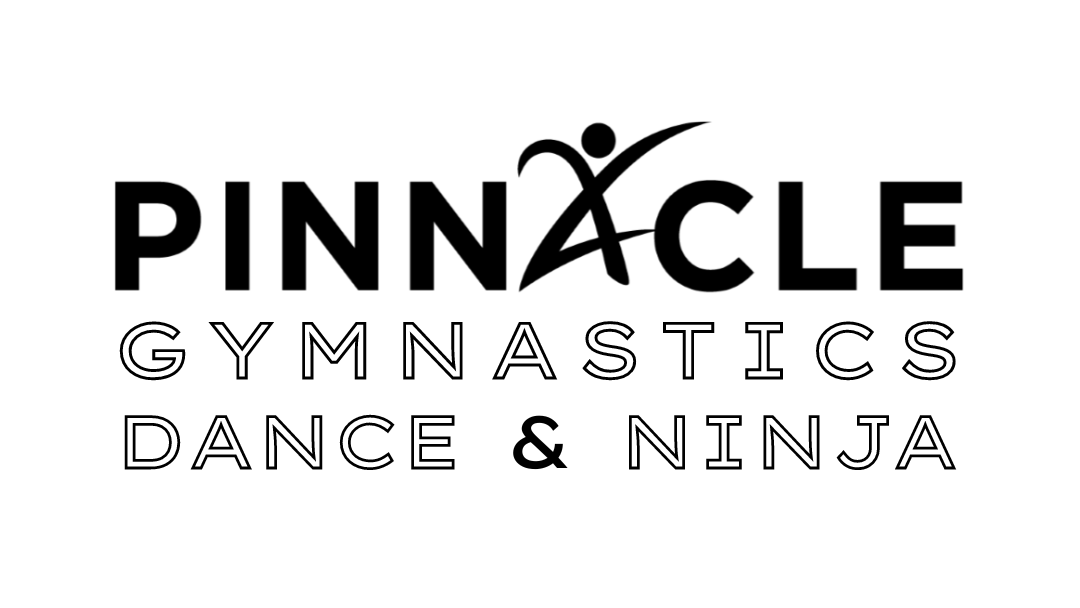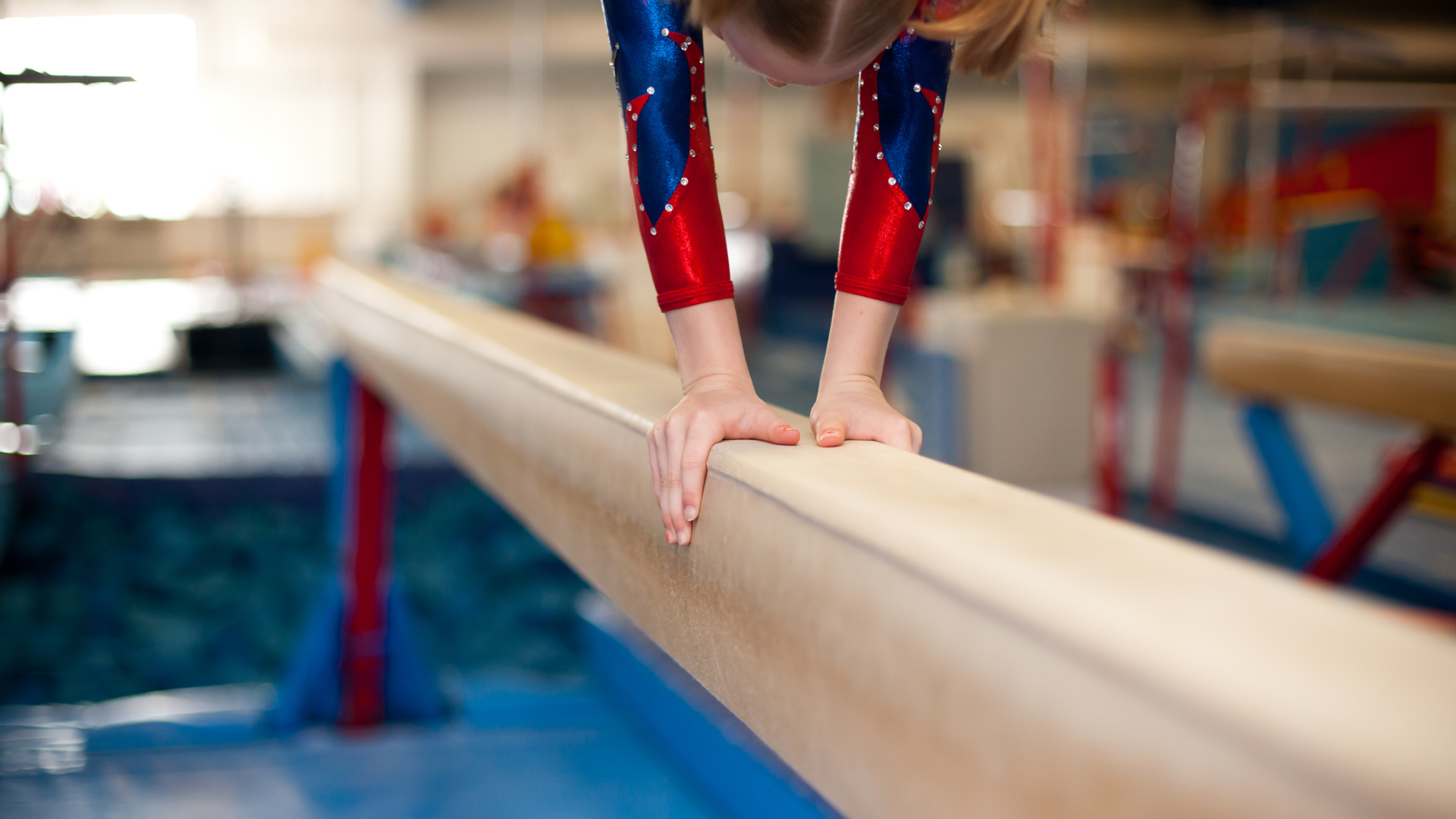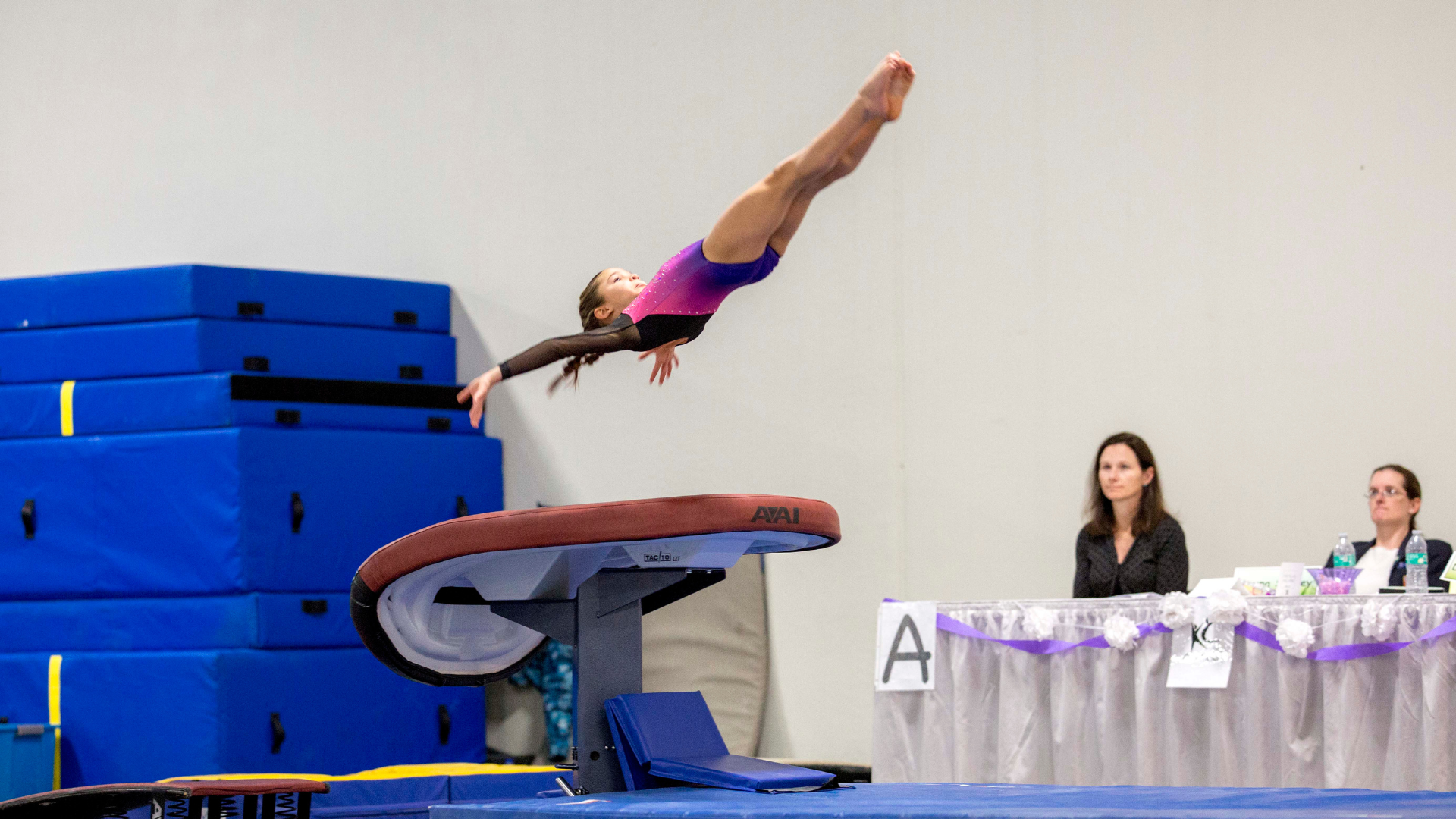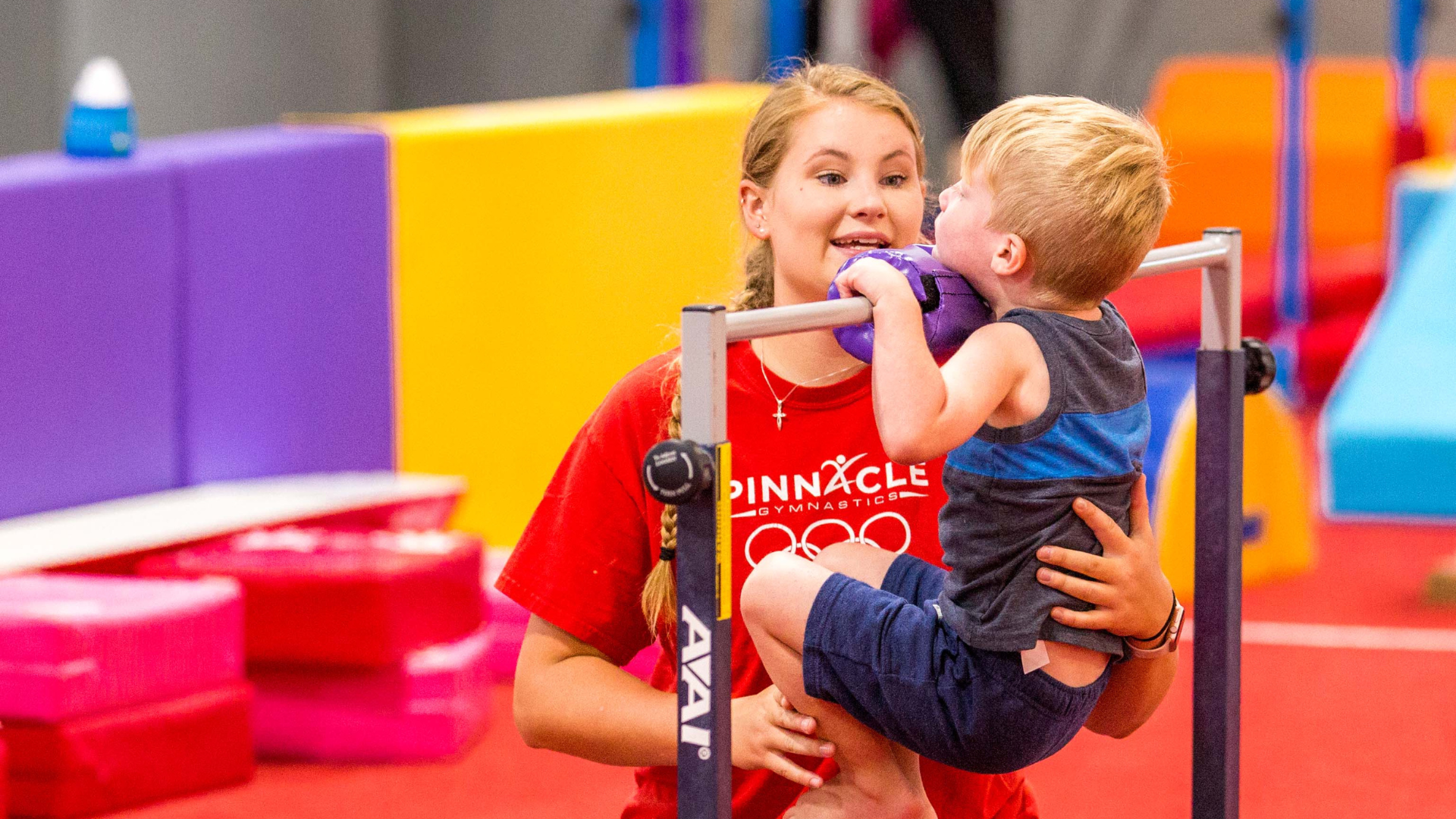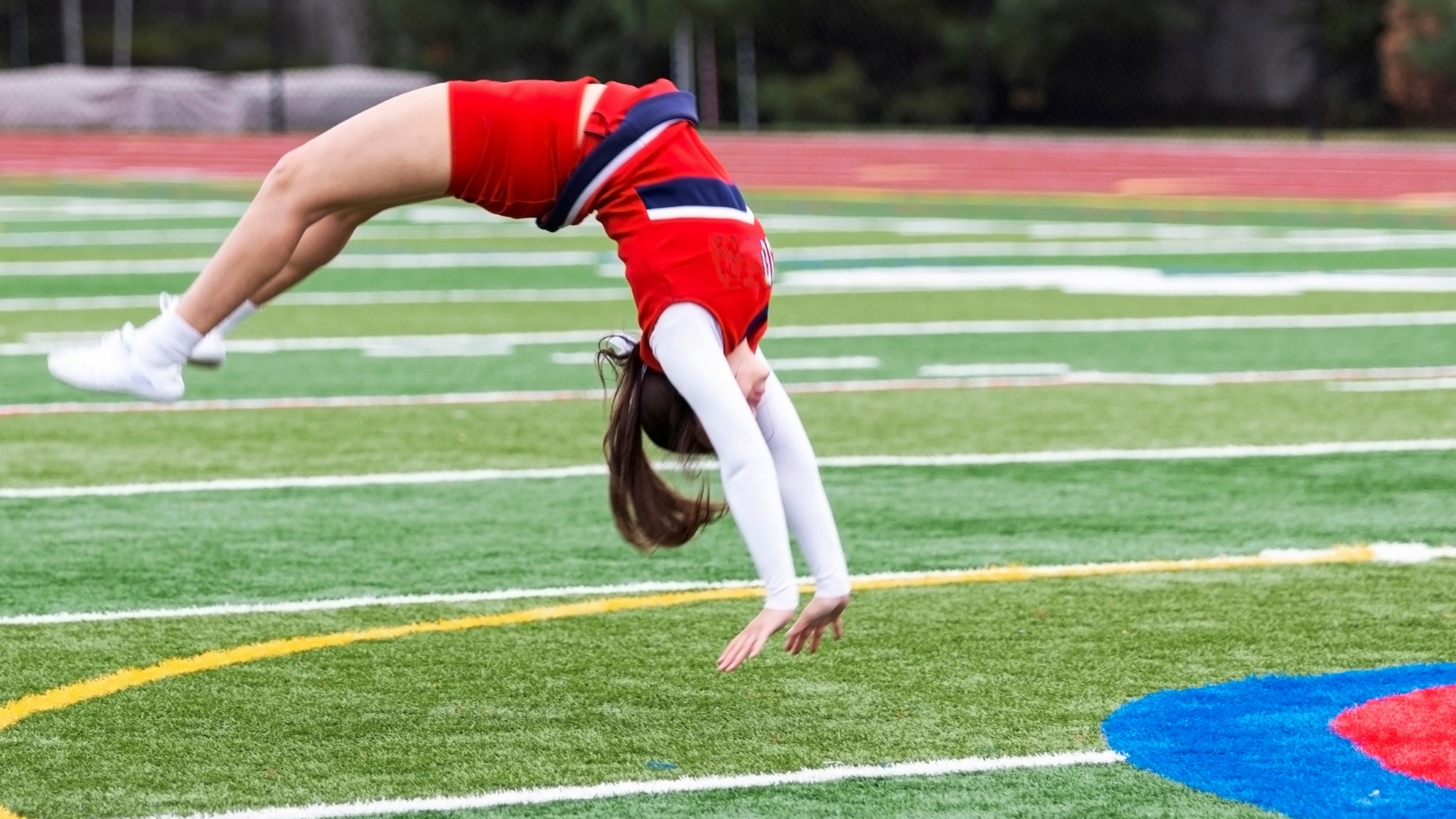5 Favorite Flyaway Drills
The flyaway is one of those skills that athletes can’t wait to learn but often feel nervous about. It looks amazing, but it can also feel intimidating at first. When taught with the right progressions, though, the flyaway isn’t actually difficult—it’s just different!
Some coaches like to start with layouts. While that method has merit, I prefer beginning in a tuck. Here’s why:
- Back layouts rotate slower than tucks, which increases the risk of landing short.
- Most athletes learning a flyaway haven’t mastered a proper layout on the floor yet—no need to add bar release into the mix right away.
- In progression order, tucks come before pikes and layouts (see DP Levels 1–5).
With that in mind, here are my top 5 drills to build strong, confident fly aways:
Coach Courtney's 5 Favorite Drills to Build Strong, Confident Flyaways:
1. Snap to Candle (Stall Bar + Half Heart Mat)
This is a perfect first step for athletes looking to improve their core strength and overall body control!
From a secure hang on the Stall Bar, athletes are encouraged to snap their legs and hips quickly into a 90/90 tuck position.
The primary goal during this exercise is to achieve an aggressive snap while maintaining a neutral head position, ensuring that the arms are kept close by the ears, the legs are held together, and the toes are pointed beautifully. It's important to set realistic expectations for their initial attempts; they may experience some cannonball-like movements at first, which can be quite surprising. Remind them, playfully, that this isn’t the lake! This light-hearted reminder can help alleviate any pressure they may feel while they work to master this crucial movement.
2. Tuck Rocker to Release (With Pool Noodle)
Now we move on to the critical aspect of release timing!
In a 90/90 tuck position, athletes begin by rocking backward three times, creating a rhythmic motion that prepares them for the next step. During the third rock, they execute a quick flick and release a noodle (or, for those seeking an additional challenge, a weighted bar). This particular exercise is designed to develop the simultaneous sensations of snapping and letting go, all while not yet being on the bar itself. By incorporating this dynamic movement, athletes can better understand the mechanics required for a successful release.
3. Candle Rocker to Roll (Spot Block Backward Roll)
Time to flip!
Starting from a hollow hold on a spot block, athletes begin by rocking back and forth twice to build momentum and prepare for the next move. On the third rock, they lift their bodies into a candle position, where they create a strong shape with their core engaged. Following this, they snap into a precise 90/90 position, ensuring their body is aligned correctly. With a fluid motion, they then roll backward off the block. This transition connects the snap shape with a genuine backward rotation.
4. Rope Flyaway Drill (Ropes, Wedge, 8” Mat)
Imagine a thrilling combination of aerial silks and gymnastics!
Athletes run up the wedge while gripping their ropes tightly in hand, they kick back into a tuck, before releasing the ropes to land safely on the mat below.
Sometimes they let go too early, that rush of excitement overtaking them, and sometimes they hold on a bit too late. But that’s perfectly okay! Each attempt contributes to the development of crucial skills like timing, air awareness, and the all-important confidence needed to take on new challenges.
5. Mat Assisted Flyaway (Into Pit or Air Bag)
Finally, it’s time to put everything together.
From either a low or medium bar, athletes will perform a series of three swings in a tuck position before releasing backward onto a slanted mat that leads into the pit. It’s crucial to maintain proper form by keeping the arms positioned by the ears and the head in a neutral alignment. To ensure safety during this practice, use the “3 swings and go” rule, which helps to establish consistency and control in the movement.
Here are some tips to enhance your training:
- Always make sure to spot the gymnast during the first several turns to provide support and safety as they adjust to the new skill.
- Consider drawing a target on the mat to add an element of fun while also helping athletes focus on their landing.
- Adjust the height of the equipment as needed, especially for those athletes who may feel nervous about the maneuver.
- Once the athlete feels solid and confident in their ability to land in the pit, you can gradually progress to floor landings, ensuring they are still being spotted for added reassurance.
This moment is incredibly exciting—the instant your gymnast releases their hands and takes flight through the air is truly exciting. It marks a significant step in their development, blending courage and skill!
Bonus Spotted Flyaway Drill
Low bar taps x3 → candle freeze on coach’s shoulder → snap to 90/90 → roll to feet.
Begin with three low bar taps, maintaining a steady rhythm. Next, freeze in a candle, balancing on the coach's shoulder, ensuring stability and control. From there, transition into a snap, positioning your body at a 90/90 angle, roll backward off coaches shoulder to feet.
These drills build the shapes, timing, and confidence needed for a strong, safe flyaway. Rotate them often, mix up equipment, and remind athletes that mistakes aren’t failures—they’re part of learning!
